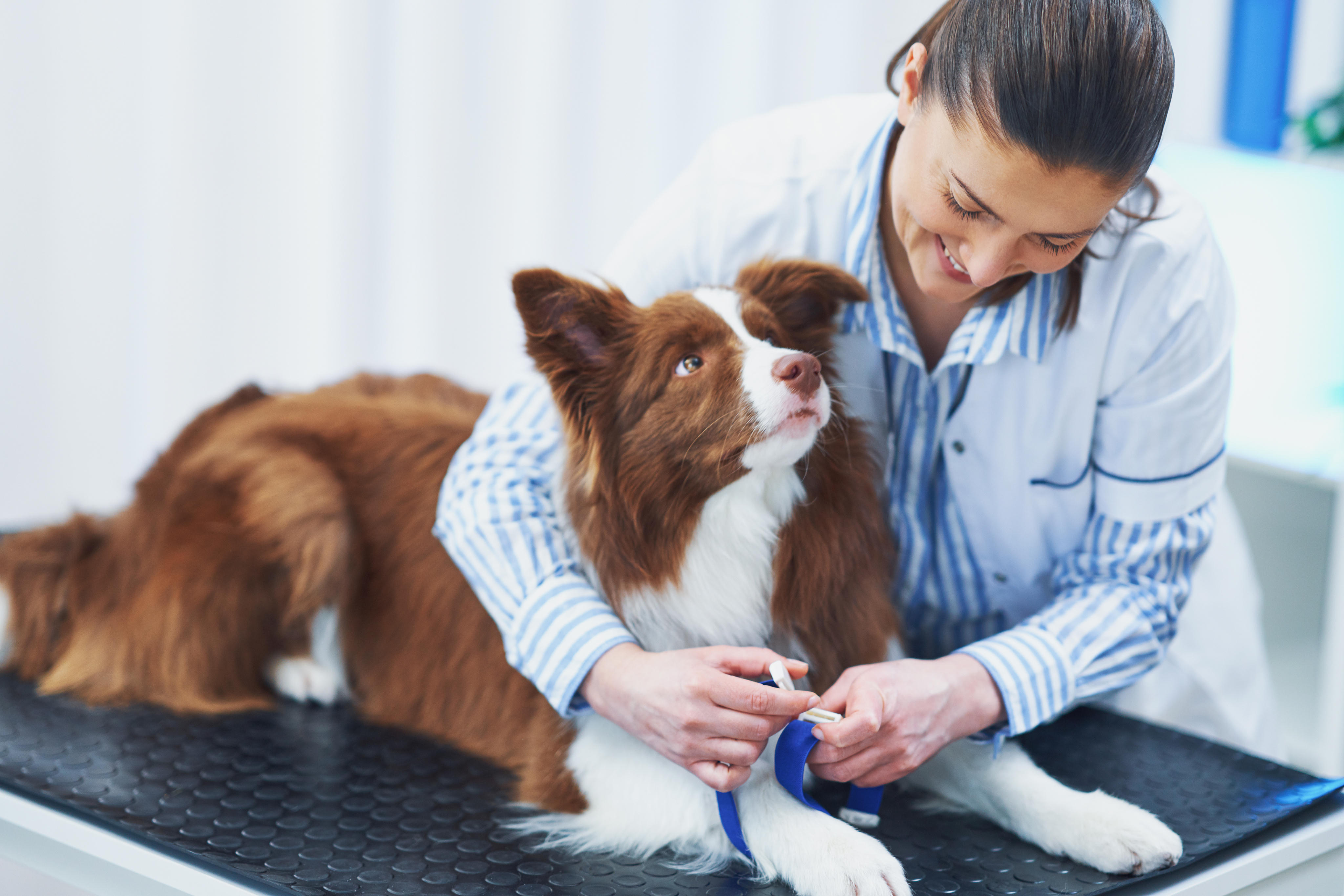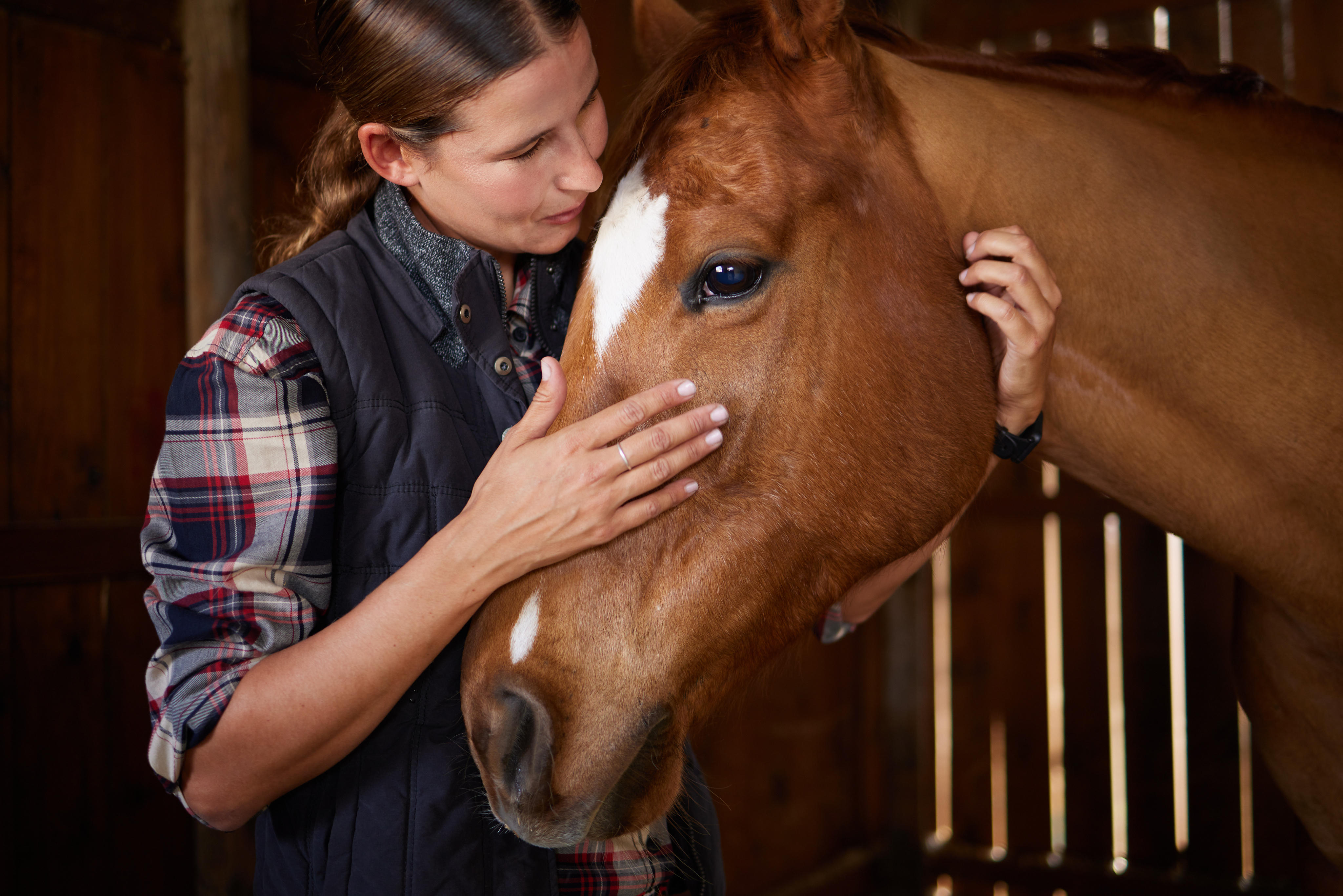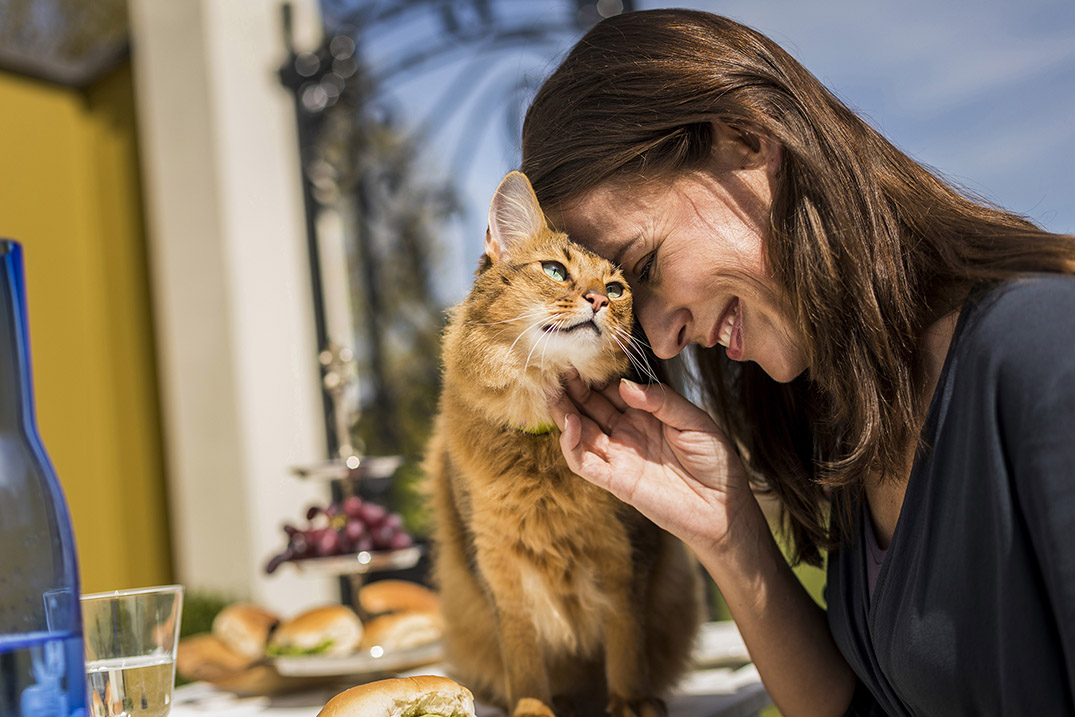Breeding
Ovulation
Timing of ovulation is the key. Most breedings will result in conception when they occur 24 to 36 hours before ovulation or the day of ovulation.
Tools to approximate ovulation timing
- Teasing
- Palpation
- Ultrasound
Your best resource for breeding management is your veterinarian. They can accurately predict ovulation and help you more efficiently manage your breeding program.
You also may want to talk to your veterinarian about facilitating scheduled breeding with Regu-Mate® (altrenogest).
Using Regu-Mate® (altrenogest)
The use of artificial lighting and administration of synthetic hormones can shorten transitional estrus, or the interval to first ovulation, and stimulate return of normal cycling.
As the synthetic form of progesterone, progestins have several applications in a breeding program:
- Suppress estrus in mares
- Facilitate attainment of regular cycles in the transitional mare
- Facilitate management of the mare exhibiting prolonged estrus
- Facilitate scheduled breeding
Oral progestin hormones such as Regu-Mate (altrenogest), effectively suppresses estrus during the time it’s administered. When treatment is discontinued, mares come in estrus within four to five days, and ovulate within five to seven days following the onset of estrus. Progestin treatment can be started at any point in a mare’s cycle. The best results are with mares who have follicles 20 mm or greater in diameter and who have been in estrus for 10 or more days.
The use of Regu-Mate (altrenogest) to suppress estrus in order to facilitate scheduled breeding requires a veterinarian’s prescription and consultation. Ask your veterinarian to put together a breeding plan customized for your operation.
For more detailed information:
Important Safety Information
Regu-Mate® is contraindicated for use in mares having a previous or current history of uterine inflammation. Natural or synthetic gestagen therapy may exacerbate existing low-grade or “smoldering” uterine inflammation into a fulminating uterine infection in some instances. Do not use in horses intended for human consumption. Avoid skin contact. Regu-Mate® is absorbed through unbroken skin, and exposure may result in serious side effects to both women and men. Wear vinyl, neoprene, or nitrile gloves when handling or administering Regu-Mate®, or when touching contaminated surfaces or equipment. Latex gloves are not protective. PREGNANT WOMEN OR WOMEN WHO MAY BE PREGNANT SHOULD NOT HANDLE REGU-MATE®. WOMEN OF CHILDBEARING AGE SHOULD EXERCISE EXTREME CAUTION WHEN HANDLING THIS PRODUCT. Regu-Mate® is readily absorbed through the skin and could lead to a disruption of the menstrual cycle or prolongation of pregnancy. Accidental spillage on the skin should be washed off immediately with soap and water. Keep out of the reach of children. For complete safety information, refer to the product label.
Pregnancy
Open Mares
- Mares have a 21-day estrous cycle.
- Behavioral estrus (heat) lasts five to seven days.
- Ovulation occurs one to two days before the end of estrus.
- When pregnant, mares may ovulate secondary follicles 18 to 23 days after first ovulation.
First trimester
- Fertilization occurs within the oviduct.
- Days 5 to 14: Embryo moves throughout the uterus. Eventually becomes stationary due to size.
- Days 16 to 17: Embryo becomes fixed in the uterus. Ask your veterinarian to confirm pregnancy with ultrasound and check for twins.
- Days 24 to 26: Embryonic heartbeat detectable with ultrasound. Ask your veterinarian to reconfirm pregnancy and check heartbeat.
- Days 35 to 40: Endometrial cups form and produce the hormone equine chorionic gonadotropin (eCG). Ask your veterinarian to reconfirm pregnancy or detect early pregnancy loss during days 32 to 36. Once endometrial cups have formed, a mare may lose an early pregnancy yet fail to cycle back.
- Days 60 to 70: Use ultrasound to determine the sex of the fetus.
- Days 100 to 120: Fetus and placenta become the primary source of progestagens to help maintain pregnancy.
- Some “problem mares” benefit from an ultrasound exam to monitor the combined thickness of the uterus and placenta and to monitor fetal wellbeing.
- Monitor progesterone concentrations in mares with a history of early pregnancy loss.
Second trimester
- During the first seven to eight months of gestation, the fetus grows slowly at approximately 0.2 pounds per day.
- Ask your veterinarian for an ultrasound exam per rectum to monitor uteroplacental thickness on a monthly basis in mares with a history of reproductive loss or the birth of abnormal foals.
- Uteroplacental thickness should remain less than 1.0 cm from 60 days to term. Consider checking uteroplacental thickness in all mares at the time EHV-1 vaccine is administered during months three, five, seven and nine.
Third trimester
- Fetal growth accelerates. The fetus gains about 1 pound per day. The foal’s birth weight is expected to be nine to 10 percent of the mare’s normal body weight. Total weight gain for the mare during pregnancy is 12 to 15 percent of her initial (pre-breeding) body weight.
- 2 to 6 weeks prior to foaling: Mammary gland development begins and colostrum is produced. Colostrum is the first milk and contains high levels of antibodies, calories and other factors and cells critical in defense against infection. Colostrum also has laxative properties.
- Mares with premature udder development/precocious lactation/vaginal discharge should have uteroplacental thickness monitored with ultrasound to detect early signs of placentitis.
- 1 to 3 weeks prior to foaling: Softening of perineum and relaxation of pelvic muscles.
- Your veterinarian should open the caslicks at one to two weeks prior to foaling.
- 5 to 10 days prior to foaling: Teats begin to distend with colostrum.
- 24 to 72 hours prior to foaling: Waxing of teat tips. Mammary secretions become opaque and sticky.
- Less than 24 hours prior to foaling: Elongation and swelling of vulva. Calcium concentration in mammary secretions increases above 40 mg/dl or 200 ppm.
If your mare has had a history of abortion or the birth of premature, weak or sick foals, discuss with your veterinarian if a transabdominal ultrasound should be performed during late pregnancy. This technique can be used to assess fetal well-being, monitor fetal heart rates and activity levels, and estimate fetal size. Volume and character of fetal fluids, as well as placental, also can be assessed during the third trimester.
Contact your veterinarian if your mare demonstrates vaginal discharge and/or premature udder development or begins leaking milk well before her due date, as these can be warning signs of placental disease and a compromised pregnancy.
Senior Broodmares
As mares age, live foal rates decline. Older broodmares are at an increased risk for a host of conditions, including pituitary pars intermedia dysfunction (PPID), endometrial fibrosis, uterine cysts, placental insufficiency, prolonged gestation, small-for-gestational-age foals, uterine artery rupture, poor quality colostrum and long umbilical cords that can become excessively twisted.
And if that weren’t enough, many older mares begin to lose body condition that may predispose them to poor perineal conformation, urine pooling (pooling of urine in the bottom floor of the vaginal cavity) and potentially an increased risk of ascending infection from the vaginal cavity into the uterus.
So how do you help your older broodmare?
Ask your veterinarian for a pre-breeding screening for Cushing’s (PPID), a breeding soundness exam with a uterine biopsy and culture, a dental exam and a thorough review of your mare’s nutritional and deworming programs. Pregnant mares who are receiving pergolide for Cushing’s disease should have that medication discontinued prior to foaling to avoid agalactia (lack of milk production) and possible prolongation of gestation.
Special Concerns
Prior to breeding, your mare should be in good weight and current on essential vaccinations and deworming. Routine dental prophylaxis and foot trimming also should be up to date. If your mare has difficulty getting in foal or carrying a foal – or if she is an older maiden mare – ask your veterinarian for a more extensive pre-breeding exam.
Explore the different sections and life stages in the Equine Health Library to better understand the special concerns related to breeding.
High-risk pregnancies
How do you know if your mare has a high-risk pregnancy? A high-risk pregnancy includes any condition that jeopardizes the pregnant mare and unborn foal, including:
- History of past complications such as premature placental separation (red-bag delivery), placentitis (bacterial infection of the placenta), premature delivery, unexplained abortion, or birth of weak or sick foals
- Problem with current pregnancy due to severe maternal illness (e.g., diarrhea, pneumonia, EPM, etc.) and/or reproductive tract disease or problem (e.g., placentitis, twinning, hydrops)
With a high-risk pregnancy, early recognition of in utero complications and placental disease is key. By knowing the potential problems ahead of time, it gives you the opportunity to begin prepartum therapy for your mare and plan for an attended delivery and even earlier supportive care for the foal if necessary. Therapy for the broodmare is more affordable than intensive care for the foal.
For mares at risk for early pregnancy loss, you may want to routinely monitor blood progesterone levels during the first trimester.
Pregnancy complications
Of course, you want your mare’s pregnancy to go textbook smooth, but problems can arise. Knowledge is power, and knowing the signs of a complication will help you and your veterinarian address it that much sooner, potentially leading to a better outcome for your mare and foal.
Any disorder that disrupts blood flow to the uterus and placenta has the potential to interrupt delivery of oxygen and nutrients to the fetus. Infection of the placenta (placentitis) has the added potential of introducing bacteria into the intrauterine environment, resulting in overwhelming infection of the fetus/foal.
Complications
Complications during the last five weeks prior to foaling and right after foaling
| EVENT | POSSIBLE CAUSE AND COMPLICATIONS |
|---|---|
| Precocious udder development, premature lactation | Placentitis, twinning: premature delivery/abortion, peripartum asphyxia |
| Excessive abdominal enlargement | Twinning, hydrops allantois/amnii |
| Prolonged gestation, agalactia (lack of milk production), dystocia, premature | Grazing endophyte (fungus) infected fescue grass the months prior to delivery, resulting in thickened placenta and difficult delivery and birth of a maladapted foal |
| Premature placental separation (red bag delivery) | Premature separation of the placenta disrupts oxygen delivery to the foal, resulting in peripartum asphyxia syndrome – also known as dummy foal syndrome, neonatal maladjustment syndrome |
| Dystocia | There are many causes of a difficult delivery including a large foal and unhealthy uterus. A prolonged and difficult delivery can result in oxygen deprivation and birth trauma to the foal (fractured ribs, limb damage, ruptured bladder, soft tissue injuries). Difficult delivery can also cause internal trauma to the mare |
| Diarrhea in the mare prepartum | Diarrhea results in unavoidable contamination of the mare’s tail, perineum and vulva and increases the risk of bacterial placentitis, infection of the fetus and perhaps premature delivery |
| Aged broodmare | Older mares are at increased risk for an abnormal placenta, contributing to the delivery of low-birth weight foals. Aging broodmares may begin to produce poor quality colostrum that can put their foals at increased risk of failure of passive transfer (FPT) |
| Placentitis | Bacterial infection of the placenta can result in the birth of infected foal, premature delivery or abortion |
Bacterial placentitis
These infections most often happen via the cervix. The most common bacterial pathogens associated with ascending placentitis are Streptococcus zooepidemicus, E. coli, Klebsiella, and Pseudomonas.
Clinical signs
- Premature udder development
- Precocious lactation
- Vaginal discharge (sick mares may or may not have this sign)
- Increased thickening of the placenta and abnormal fluctuations in maternal progesterone levels
The goals of therapy should be to treat the infection and prevent premature labor. Key components of a treatment plan include antibiotic therapy along with medications to prevent uterine contractions and decrease inflammation. Your veterinarian will design a treatment plan for your mare and can monitor your mare and her unborn foal using ultrasound and other diagnostic tools.
Prolonged Gestation
Some mares have normal pregnancies that last for up to 374 days or longer. That’s why it can be difficult to define a post-term pregnancy by days of gestation alone. Also, duration of gestation is, in part, controlled by a number of factors: Colts tend to have longer gestation lengths than fillies. Mares due to foal earlier in the year may have longer gestation lengths due to the shorter photoperiod. Older mares tend to have longer gestations.
Once human error and miscalculation of the foaling date and/or inaccurate breeding date have been ruled out, other causes of prolonged gestation length include:
- Fescue toxicosis
- Delayed embryonic development
- Severe maternal malnutrition
Fescue toxicosis in the late-pregnant mare is characterized by an unreadiness-for-parturition, which leads to prolonged gestation, abortion, dystocia and agalactia accompanied by placental abnormalities such as premature placental separation, thickening and edema. In the foal, unreadiness-for-birth is associated with an increased incidence of sepsis (overwhelming bacterial infection), peripartum asphyxia syndrome, failure of passive transfer of colostral antibodies and “failure to thrive” following delivery. Foals from mares grazing endophyte-infected tall fescue grass are at risk for this syndrome.
The ideal management strategy is to prevent mares from consuming infected pasture or hay 60 to 90 days prior to foaling. If this is not possible or practical, then the daily administration of a drug called domperidone can help prevent many of the signs.
Regardless of the cause, if your mare is experiencing an abnormally long gestation (greater than 365 days or at least several weeks longer than her past pregnancies), call your veterinarian for advice.
Hydrops
Hydrops describes an excessive accumulation of fetal fluids (usually allantoic fluid) within the uterus. This relatively rare condition typically occurs in the last trimester after an otherwise uneventful pregnancy. Its cause is not well understood.
Hydrops can be a life-threatening condition for the mare. In severe cases, rupture of the uterus can occur. The fetus may be normal, but its survival depends on how late in the pregnancy the condition develops and how successfully the mare is supported during labor. Subsequent pregnancies can be normal.
Clinical signs of hydrops allantois
- Enormous increase in the mare’s abdominal size over 10 to 14 days due to rapid accumulation of fluid within the uterus
- As a result of the increased volume of fetal fluids, the mare often displays loss of appetite, increased heart rate and breathing rate, depression, low-grade colic, decreased manure production, difficulty walking and marked ventral edema along the ventral abdomen
- Severe cases may develop a hernia along the underside of the belly or prepubic tendon rupture
Your veterinarian can confirm the condition through rectal palpation of the uterus and ultrasound. Therapy will depend on how rapidly the condition has developed and the stage of gestation.
Premature Placental Separation (PPS)
Premature placental separation is a medical emergency.
During PPS there is premature detachment of the outermost placental membrane from its uterine attachment, which results in the presentation of a velvety red membrane at the vulvar lips instead of the translucent white amniotic membrane. The placenta fails to rupture at the cervical star. Oxygenated blood flow to the fetus is disrupted, and asphyxia ensues.
During this delivery, the placenta must be ruptured manually or with the aid of a blunt-ended bandage scissors; the amniotic membrane exposed; and the foal delivered as expediently as possible. The degree of peripartum asphyxia depends on the degree and duration of placental separation. Surviving foals may require resuscitation and/or oxygen administration.
Twins
Mares were not made to carry twins. The mare’s uterus is not equipped to successfully support more than one fetus. As a result, mares will often eliminate one twin during early pregnancy. But if they don’t, twinning usually results in the loss of both fetuses later in pregnancy.
If twins are detected during early pregnancy ultrasound exams, your veterinarian will discuss with you the options of terminating the pregnancy and rebreeding your mare or trying to remove one twin before days 30 to 35 and allow a single fetus to grow and develop normally. After day 35, the formation of the endometrial cups and the hormones they produce will prevent the mare from recycling in a timely fashion should the pregnancy be terminated or lost.
If twins are missed during early pregnancy, both will continue to develop and essentially fight for space within the uterus. In most cases, one twin will die during mid to late gestation, and that event will trigger abortion and loss of the pregnancy. The demise of one twin is one cause of premature udder development well in advance of the end of gestation.
Occasionally both twins will survive to near-term delivery. Delivery of one or both twins is frequently complicated and can result in a dystocia. Even if they are both born alive, twins still have an uphill battle. Usually, one twin is larger than the other, and both may show signs of immaturity and have incompletely ossified (calcified) skeletons.




 Go To United States
Go To United States Algeria
Algeria Argentina
Argentina Australia
Australia Austria
Austria Bahrain
Bahrain Belgium (Dutch)
Belgium (Dutch) Brazil
Brazil Canada (English)
Canada (English) Chile
Chile Colombia
Colombia Croatia
Croatia Czech Republic
Czech Republic Denmark
Denmark Ecuador
Ecuador Egypt
Egypt Finland
Finland France
France Germany
Germany Greece
Greece Hungary
Hungary India
India Indonesia
Indonesia Iraq
Iraq Ireland
Ireland Israel
Israel Italy
Italy Japan
Japan Jordan
Jordan Kuwait
Kuwait Lebanon
Lebanon Malaysia
Malaysia Mexico
Mexico Morocco
Morocco Netherlands
Netherlands New Zealand
New Zealand Norway
Norway Oman
Oman Panama
Panama Peru
Peru Philippines
Philippines Poland
Poland Portugal
Portugal Qatar
Qatar Romania
Romania Russian Federation
Russian Federation Saudi Arabia
Saudi Arabia South Africa
South Africa South Korea
South Korea Spain
Spain Sweden
Sweden Switzerland (French)
Switzerland (French) Taiwan
Taiwan Thailand
Thailand Tunisia
Tunisia Turkey
Turkey Ukraine
Ukraine United Arab Emirates
United Arab Emirates United Kingdom
United Kingdom Uruguay
Uruguay Yemen
Yemen Global
Global